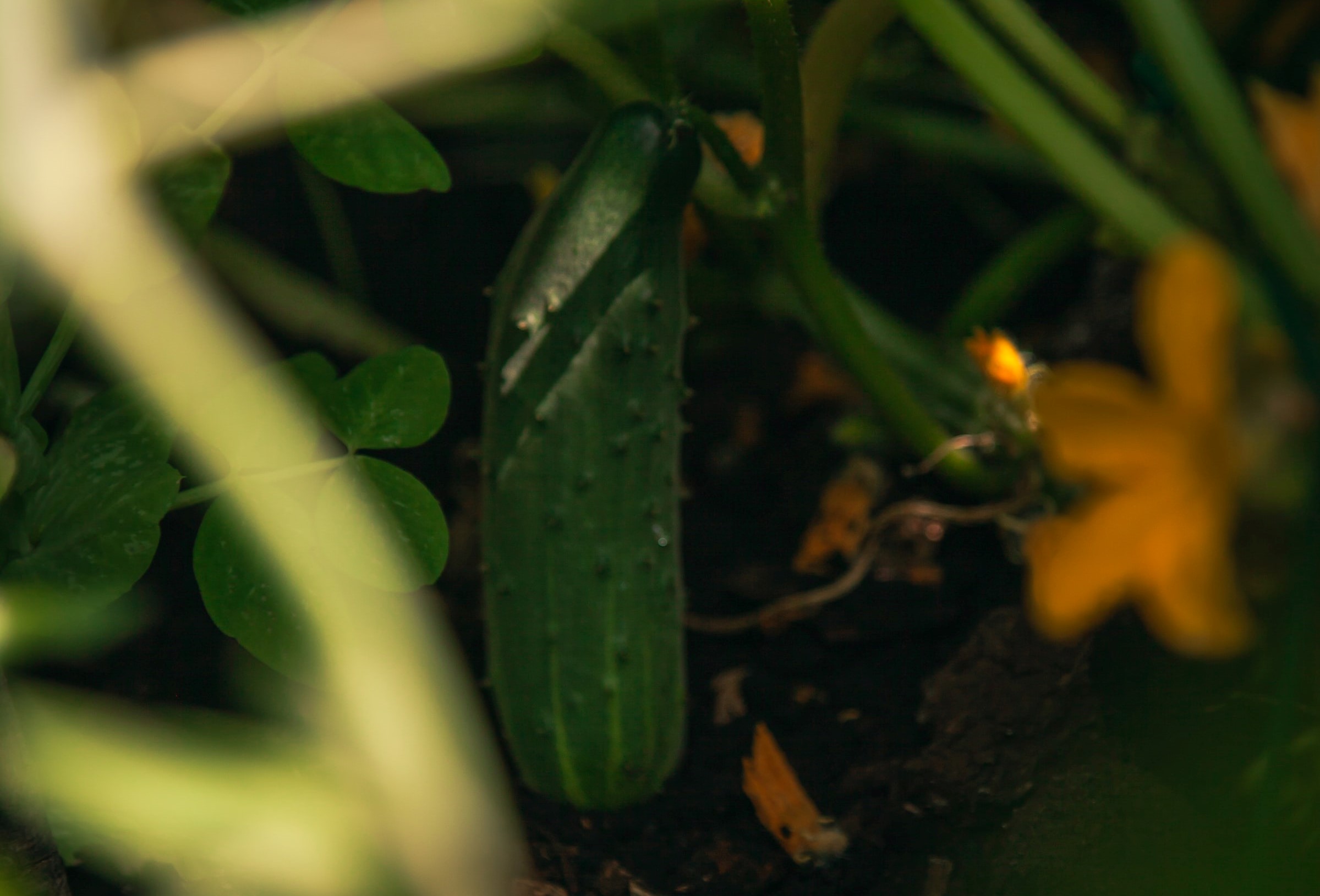Due to its large leaves, the cucumber plant has a significant transpiration surface, through which it loses a substantial amount of moisture during sunny and hot days. This moisture loss cannot be compensated for by the shallow roots from the water reserves in the deeper soil layers.
This system allows for irrigation at any time of the day because there is no risk of shock from applying cold water to hot plant parts. By avoiding wetting the leaves, favorable conditions for the development of fungal diseases are also prevented.
The system does not operate under high pressure, which minimizes the disruption of the soil’s crumbly structure that is favorable for cucumber growth. The lower working pressure (0.3 – 1.5 bar) also results in lower energy consumption. The localized water supply reduces the irrigated area, thus minimizing water losses due to evaporation or leaching (water conservation). A further advantage of drip irrigation is the possibility of fertigation, i.e., the application of liquid fertilizers simultaneously with irrigation.
One of the most significant problems with drip irrigation is the clogging of drippers, which can be mechanical or chemical. Dripper clogging is directly related to the quality of the irrigation water and its physical, chemical, and microbiological factors. Mechanical clogging can be prevented with filters, while chemical clogging occurs due to the formation of insoluble salts at the dripper outlet or within the dripper.
Drip Irrigation System
The system consists of a drive unit with the system head, a filtration device, a main pipeline, lateral or distribution pipes, and drippers. The characteristic feature of the drip system is the dripper, where the working pressure from the pipes is reduced, and water is released onto or into the soil in the form of droplets.
This method of irrigation has two systems: surface and subsurface irrigation. In surface irrigation, the pipes and drippers are placed above or on the soil surface, while in subsurface irrigation, they are buried in the soil.
In cucumber cultivation, irrigation pipes are almost always laid on the soil surface but under the polyethylene film if used.
Proper water dosing is very important in irrigation practice. There are two basic elements in water dosing: the irrigation amount and the timing of irrigation.
The irrigation amount is the quantity of water applied in a single irrigation event (m³/ha or mm). The irrigation amount should wet the soil to field capacity, meaning the amount depends on the soil type. To determine the irrigation amount, the soil moisture before irrigation and the soil’s water-holding properties must be known. The difference between the field capacity and the current water content in the soil represents the irrigation amount.
The timing of irrigation is the precise moment to apply the irrigation amount, which is a key condition for successful and rational irrigation. If the timing is determined “by eye,” irrigation can be inefficient and potentially harmful.
For cucumber cultivation, soil moisture should be maintained at 80% of field capacity through irrigation. The water temperature for irrigation should not be lower than 18°C.
To achieve optimal timing and water dosing, thus ensuring efficient and rational water use, soil moisture meters should be used.













































